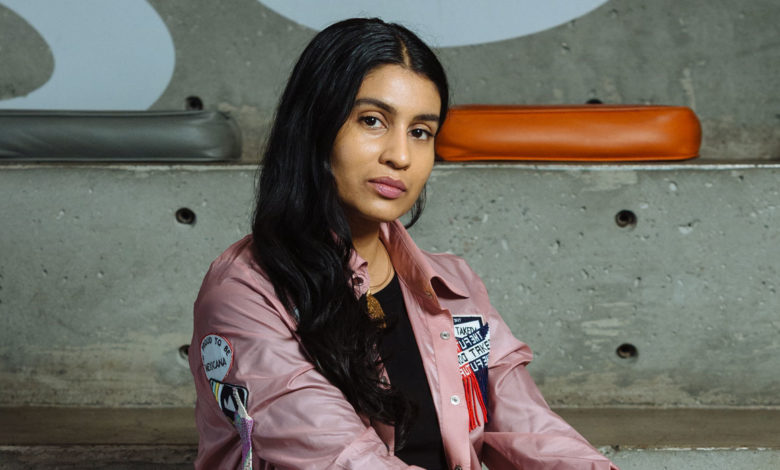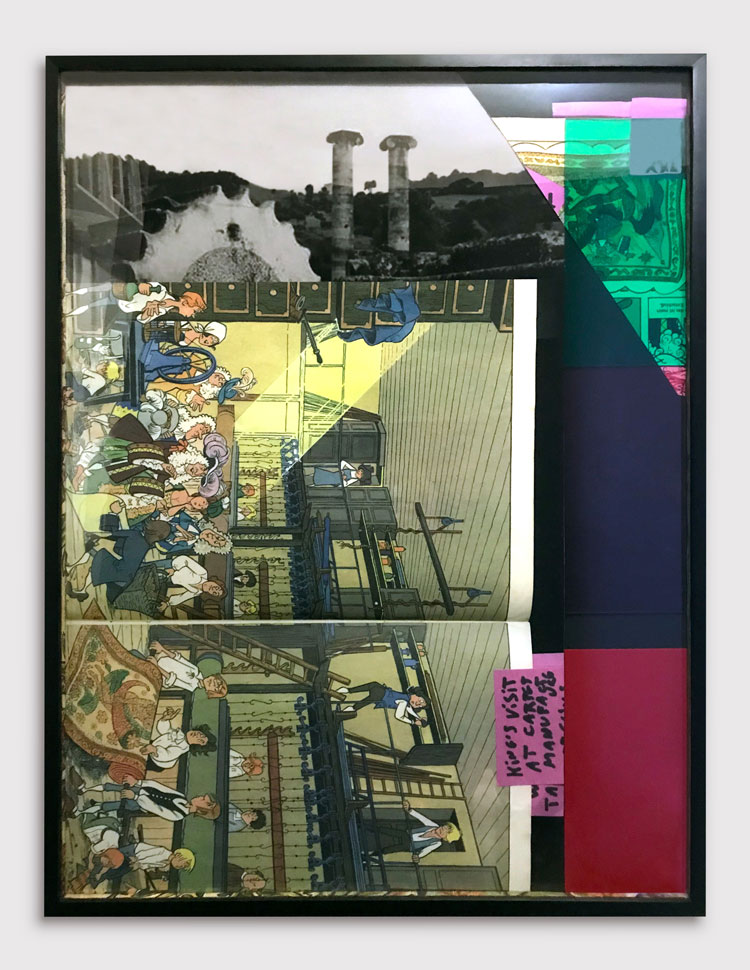
Baseera Khan Opens a Solo Exhibition at Moody Center for the Arts
Weight on History explores how cultures interact.

Houston has become a welcoming destination for diverse immigrant populations that contribute to the city’s inclusive and thriving arts scene.
Since the Moody Center for the Arts opened on the campus of Rice University in 2017, the many diverse art exhibits hosted there have reinforced the city’s commitment to illuminating the human experience through the arts.
On June 3, the venue will open a solo exhibition of works by Texas-born, New York-based multidisciplinary artist Baseera Khan. Entitled Baseera Khan: Weight on History, the exhibit will feature pieces that offer a challenging critique of existing power structures and a vision for alternatives.
Khan, 42, was born in Denton, Texas, to an Indian-Afghani-East African family. The artist identifies as a femme Muslim American and uses they/them pronouns.
Today, they live and work in Brooklyn but still call Texas home. “The state, and in particular Houston, has had an impact on my art,” Khan explains. “The entire arts scene there—including the music—helped me find my voice to develop and grow.”
The list of galleries showing Khan’s work is long. A short selection includes galleries in New York City as well as Fort Worth, Los Angeles, Aspen, Tucson, and Munich, Germany. Khan’s work can also be found in many permanent museum collections including Columbus, Paris, San Francisco, New Orleans, and the Guggenheim Museum in New York City.
Visitors to the Khan exhibition on the Rice campus are in for a treat. It includes a “constellation” of unexpected media such as textile rugs and garments, sculptures that rotate, light up, and can be walked through, and even the sound of Khan’s own music—all of which brings the artist’s unique point of view to life.
“I make work in many ways; that’s why I think of it as a ‘constellation of works.’ A constellation helps create a ‘universe,’” they state with a smile.
Khan fearlessly explores complex issues such as commodification, politics, and the human body through pop culture and architecture. Shifting seamlessly, they spotlight the ways in which marginalized populations are ignored or misrepresented.

Carpet Green, from Law of Antiquities, 2021
Visitors will see a work called Acoustic Sound Blankets, a sculptural garment made of thick, sound-absorbing material and featuring circular apertures that call to mind both the politicization and protective nature of clothing. Second Skin is a large sculpture resembling a classical column partially lined with Kashmiri rugs. Combining Western and Eastern design elements, the work conveys a feeling of opulence while also referencing historical tensions.
The Moody commissioned Khan to create a new work specifically for this show. Painful Arc expands on Khan’s interest in architecture by using commonplace materials to render a traditional Islamic arch decorated with images of the artist’s body climbing the structure. The juxtaposition of references prompts questions about equity, access, and how architecture is used to wield power.
“I hope visitors can feel the weight of Painful Arc while also understanding its weightlessness,” Khan says. “In some ways, we need to know our history. But at the same time, we can’t let it define us.”
Khan has produced art for many years, but was never certain they could use it to voice their views on culture, society, and power.
“For a while, I drove a waffle food truck so I could keep producing art. I was not sure I could speak through [my early artwork], but I knew I had to keep going. That is important to me. At a very young age, I needed to speak up for myself. It’s always been a struggle, but I have learned that my art can certainly [speak for me],” Khans states.
The stunning design of the Moody Center’s new building offers all sorts of opportunities for exhibitions, they note. “The gallery space is beautiful. I chose works for the exhibit that would honor the space, the walls, the light, and not compete with it or cover it. The entire venue is remarkable.”
Alison Weaver, the Suzanne Deal Booth Executive Director of the Moody Center for the Arts, notes that the building, designed by Michael Maltzan Architecture, is very well suited to hosting innovative exhibitions by
artists such as Khan.

Chromogenic print, acrylic, wool hand-made Kashmiri rug
“Our mission to foster interdisciplinary conversation through the arts is enabled by the flexible gallery and performance spaces inside. We can’t wait to share how Baseera’s work has transformed the [building’s] architecture in unique and memorable ways,” Weaver says.
All exhibitions and programming at the Moody Center for the Arts are free and open to the public. The Center’s mission is to encourage creative thinking and original expression, enrich innovation, and promote cross-campus and community collaboration through encounters with the arts. It is designed to connect the arts at Rice to the greater Houston community and beyond.
What: Baseera Khan: Weight on History
When: June 3–August 27
Where: Moody Center for the Arts, Entrance 8 on University Blvd.
Info: moody.rice.edu
This article appears in the May 2022 edition of OutSmart magazine.










